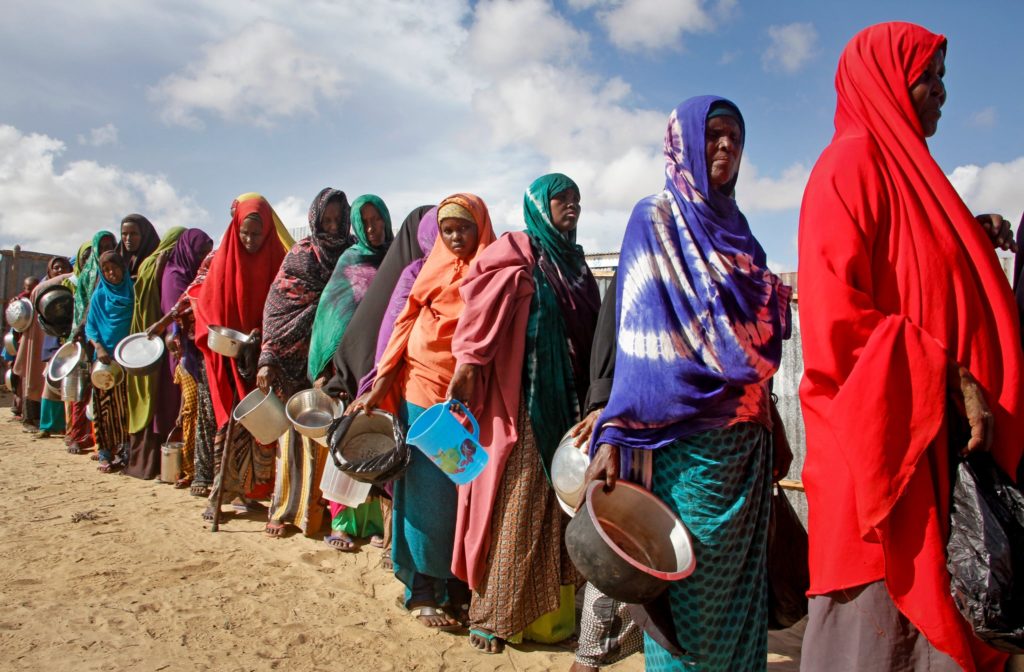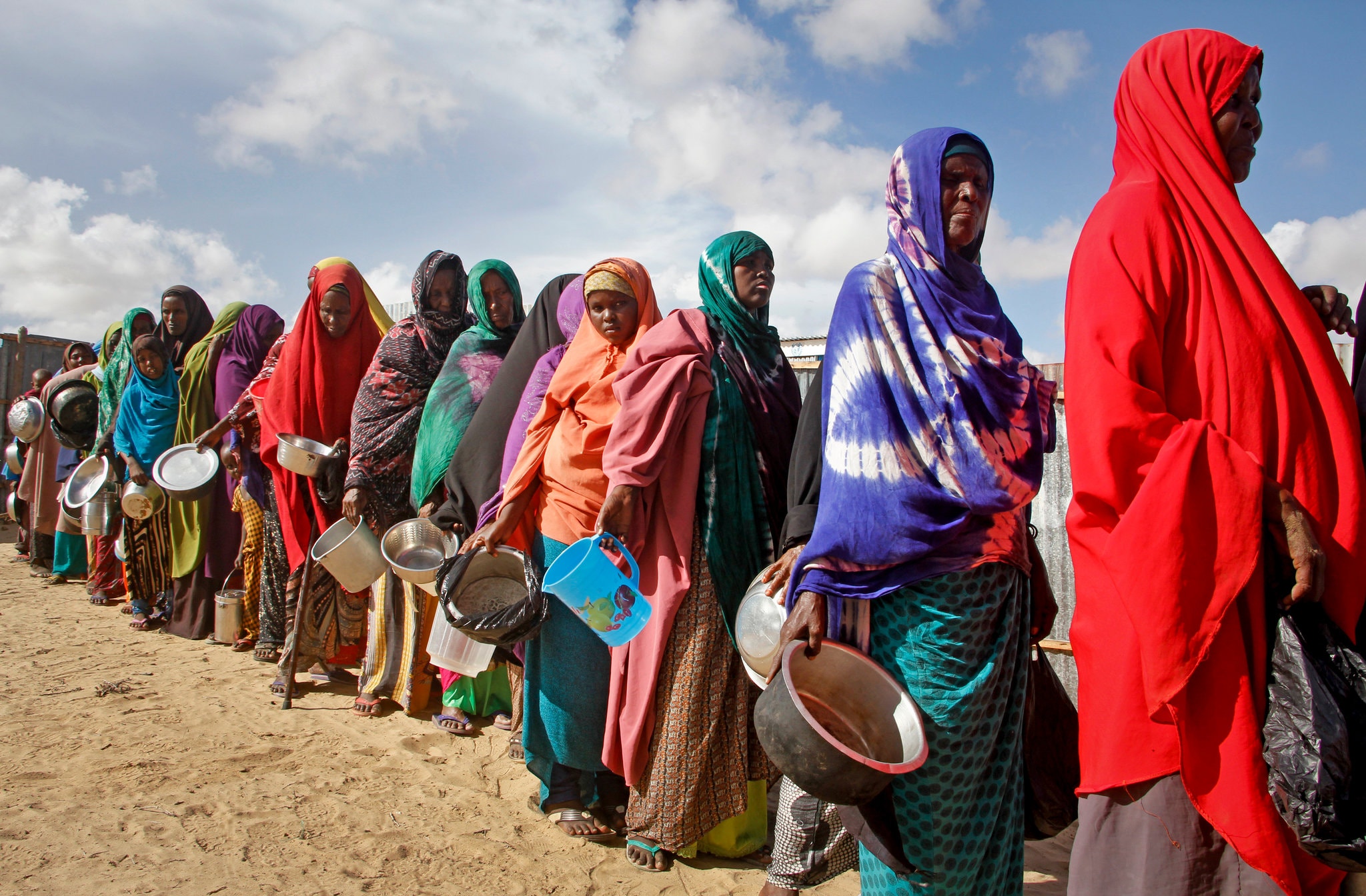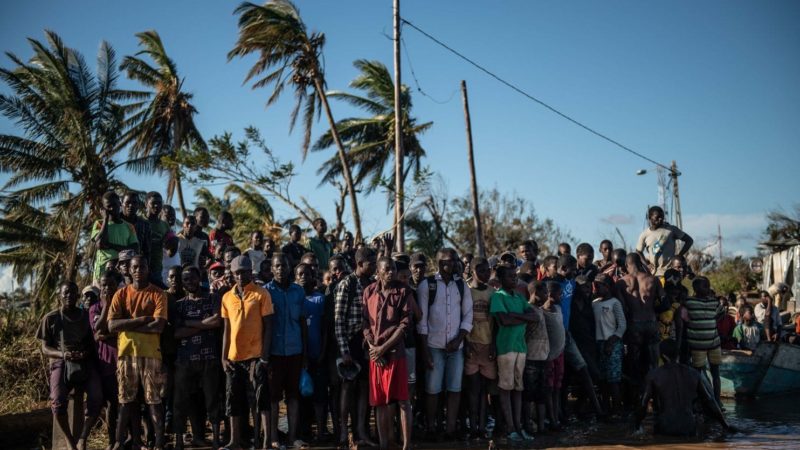
Women lined up for food last month at a camp outside Mogadishu, Somalia, after fleeing drought-stricken areas.CreditCreditFarah Abdi Warsameh/Associated Press
By Rick Gladstone
The top humanitarian official at the United Nations sounded the alarm on Wednesday about the looming risk of famine in the Horn of Africa because of drought, warning that more than five million people are threatened, mostly Somalis.
The official, Mark Lowcock, under secretary general and emergency relief coordinator at the United Nations, said that he had allocated $45 million from its emergency relief fund to help purchase food and other assistance for people of the region, and that many of them could face a serious food crisis by September. He called the allocation one of the biggest ever made from the fund.
Somalia and parts of neighboring Ethiopia and Kenya have suffered from repeated seasons of failed rains that have shriveled crops, depleted livestock and left people’s food and water supplies increasingly insecure.
“Communities that were already vulnerable due to past droughts are again facing severe hunger and water scarcity and are at risk from deadly communicable diseases,” Mr. Lowcock said in a statement announcing the emergency allocation. He said aid agencies in Somalia in particular were “overstretched and grappling with a severe lack of funding.”
Speaking to reporters in New York before the announcement, Mr. Lowcock said that the poor rains were partly related to weather patterns associated with the deadly cyclone that ravaged Mozambique a few months ago, and that the rains in Somalia especially had been “among the poorest on record.”
The bulk of the $45 million, he said, will be allocated for Somalia, where 2.2 million people could face acute food insecurity by September, a 40 percent increase from January. A further 3.2 million people, he said, will need assistance by year’s end.
Somalia has suffered more than half a dozen periods of food insecurity in the nearly four decades of strife and anarchy that have roiled the country. The most recent were the 2010-12 famine, a food crisis in 2014 and a near famine in 2016-17.
The 2010-12 famine is believed to have killed more than a quarter-million Somalis, half of them younger than age 5.
“I don’t think the world is going to tolerate or watch another famine in Somalia,” Mr. Lowcock said. The choice, he said, was either to aggressively intervene now, or “wait until we see the horror unfolding.”
According to the United Nations definition, a famine is declared when acute malnutrition rates among children exceed 30 percent, more than two people per 10,000 die per day and people are unable to obtain food and other basic necessities.
“We need to move to a system where we act much earlier on the warning signs of drought and hunger so that we can cut response times and costs and reduce deaths and human suffering,” Mr. Lowcock said.
He sought to reinforce that message in a speech prepared for delivery later Wednesday to humanitarian aid advocates in Berlin.
“To put it in simple terms, it’s much better to prevent a child becoming so malnourished that only an expensive therapeutic feeding program can save her,” he said in the speech, “than to wait until she is within an inch of her life before intervening.”

